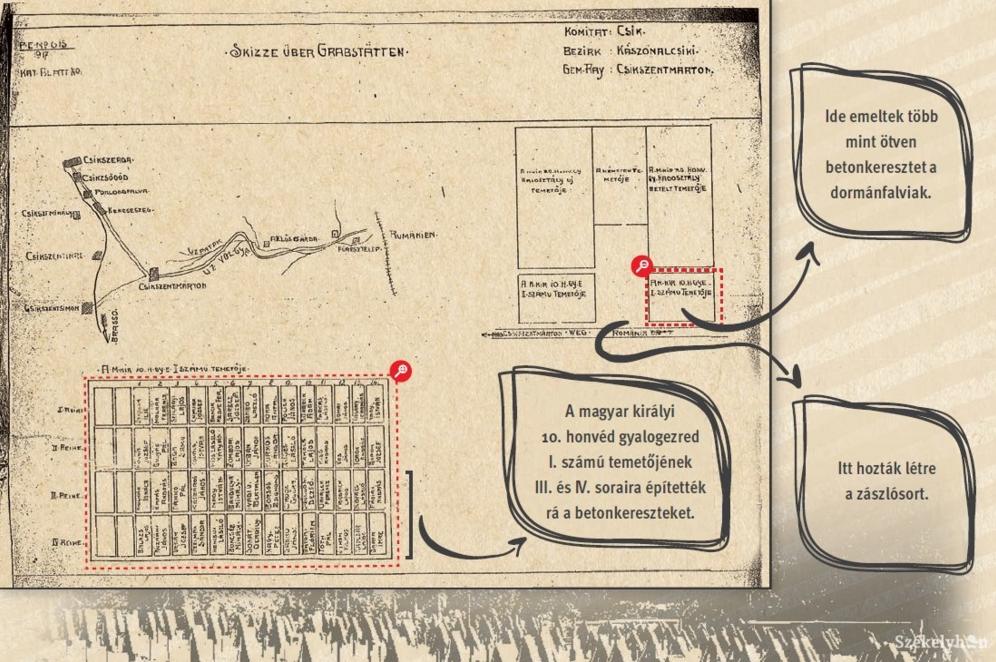Harghita/Hargita County Council has launched a website to fill in the missing information and give citizens interested in this topic of historical and political debate a better understanding of what has really happened in the Úz Valley, location of the Austro-Hungarian military graveyard which a nearby Romanian town attempted to hijack, causing a serious uproar among ethnic Hungarians.
The dedicated website, a subdomain of the council’s main page, gives detailed information in two languages, Hungarian and Romanian, about the valley, and it also provides information about the disputed borders between the borders of Harghita and Bákó (Bacău) counties. This is one of the main sources of the dispute, as the mayor of Dărmănești (Dormánfalva in Hungarian) argues that the land where the disputed cemetery sits belongs to the territories administered by Dărmănești. The mayor cites papers issued by the cadastral office in 2011.
The problem with this argument is that the papers in question are not legal documents, because the modification to the county’s borders was unilaterally made without the knowledge of the Harghita County Council and Szentmárton/Sânmartin village, and in a disputed manner and in pursuit of a disputed goal, the dedicated website reads.

As we previously reported, the Dărmănești council recently set up Romanian graves and a monument in a Hungarian military graveyard in the Úz Valley on the territory of the neighboring Szentmárton village, part of Harghita County. According to their plans, they will inaugurate the monument and the recently set crosses with a military parade on May 17. The action caused an uproar among Szekler-Hungarians, because crosses were mounted on top of the 10. Royal Hungarian Honvéd infantry regiment’s soldier’s graves.
Hunor Kelemen, the president of RMDSZ and Călin Popescu Tăriceanu, the president of ALDE (Alliance of Liberals and Democrats) have met to discuss the unauthorized modification of the cemetery. Following the meeting, Kelemen said to the press that he had informed Tăriceanu about the situation and asked him to stop the ongoing modifications. Both the mayor and vice-mayor of Dărmănești are members of the ALDE party. Tăriceanu said that “the problem can be solved quickly and in a civilized manner”.
Kelemen’s meeting with Tăriceanu comes just a few days after Hungarian foreign minister Péter Szíjjártó asked his Romanian counterpart, Teodor Meleșcanu to stop the attempted takeover of the Austro-Hungarian military graves in the Úz Valley.
Title image: The previously set up Romanian concrete crosses in the Hungarian post cemetery, where 650 Hungarian and Austrian and German soldiers are resting, and not even one Romanian. (Photo: Edit Kátai / MTI)